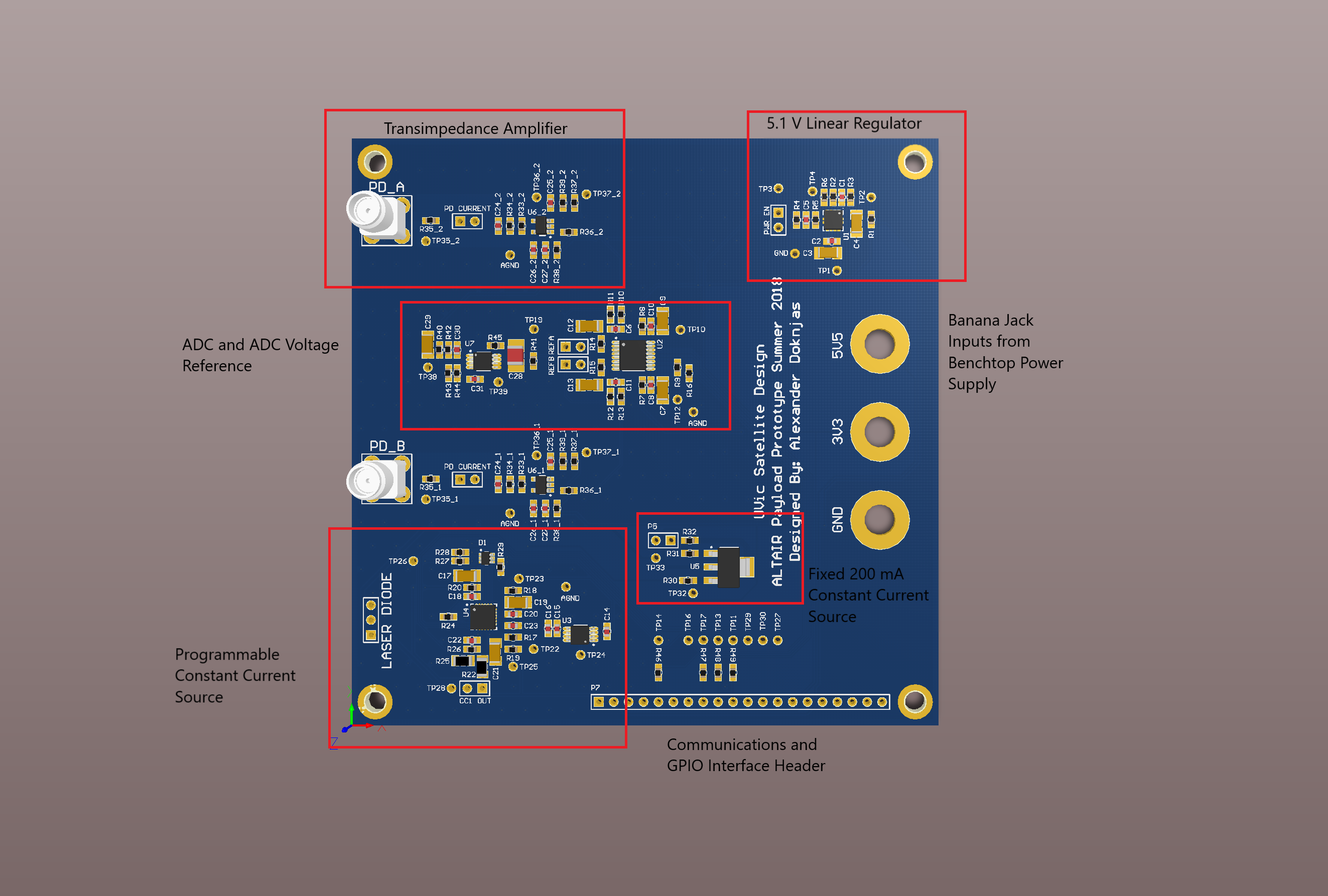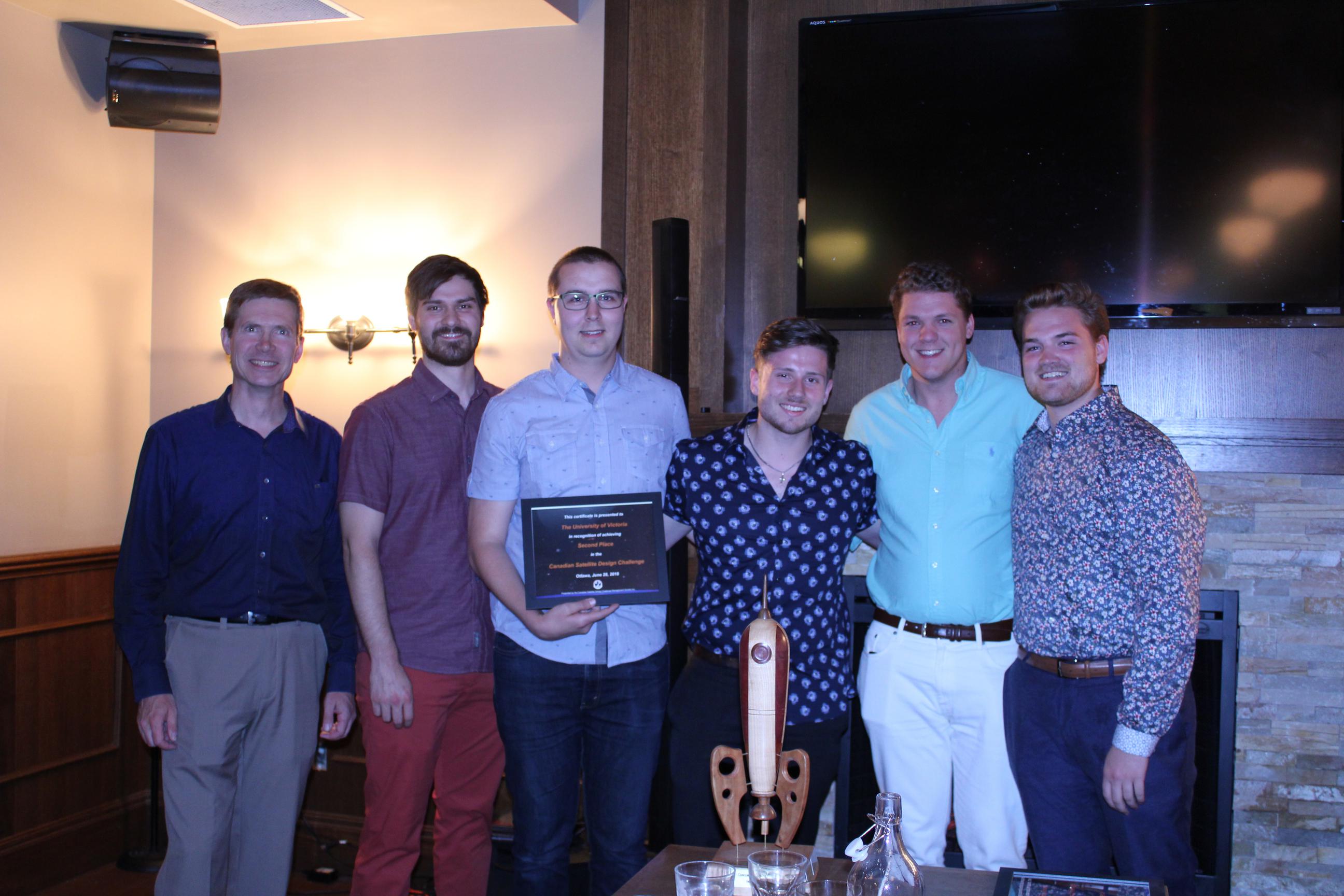-
-
ALTAIR Payload

Airborne Laser for Telescopic Atmospheric Interference Reduction (ALTAIR)
The ORCA2Sat nanosatellite will be deployed into low Earth orbit in 2021 carrying the ALTAIR Payload. This payload is based of an existing design used in a weather balloon, please give this website a visit for more information. The ALTAIR balloon payload requires extensive scope change, redefining requirements and redesigning critical systems to ensure it meets the space, power and environmental requirements of the nanosatellite and its operating environment.
One component of the redesign is the change in photosensor, photosensor amplifier and photosensor signal conditioning used in the original design. The preferred photosensor was analyzed and identified as a photodiode and a literature survey of the existing solutions for photodiode amplifiers performed. The selected solution was a transimpedance amplifier operating the photodiode in photovoltaic mode. A transimpedance amplifier was then designed for the specific photodiode and analysis performed to ensure proper operation. A printed circuit board was then designed for the transimpedance amplifier circuit along with the additional circuitry to make a proof of concept prototype for the entirety of the satellite version of the ALTAIR payload. This circuit board was then underwent testing and hardware characterization, but due to the limited equipment available only rudimentary testing was performed.
Finished PCB outlining the PCB layout
The PCB design is the most interesting part of this project. Laying out a PCB to ensure that the electronics do not introduce greater than 0.2% uncertainty is very difficult. Mixed-signal analog systems like this one are fun to layout as it requires a lot thinking and planning on grounding, component placement and making sure its easy to test.
Some of the best resources that helped me tremendously in this project:
- UDT Sensors, “Photodiode Characteristics and Applications,” UDT Sensors Inc, [Online]. Available: http://www.phas.ubc.ca/~beaudoin/PDS%20Papers/Position%20Detector%20Info/UDT_PhotodiodeCharacteristics.pdf. [Accessed August 2018]
-
Great coverage on photodiode biasing and effects of photodiode biasing. Introduces design solutions to solve common problems.
- Wei-Chih Wang, “Optical Detectors,” [Online]. Available: https://depts.washington.edu/mictech/optics/me557/detector.pdf. [Accessed August 2018].
-
Great presentation that covers the majority of the theory and keeps it simple and concise.
- J. Caldwell, “1 MHz, Single-Supply, Photodiode Amplifier Reference,” TI Designs, November 2014. [Online]. Available: http://www.ti.com/lit/ug/tidu535/tidu535.pdf. [Accessed August 2018].
- Complete design overview and walk through with simple explanations of everything. Goes over a photoconductive circuit but the design steps are the same.
This project was very exciting because we got to fly out to Ottawa at the end of June and vibration test the Homathko satellite carrying the ORCA2Sat ALTAIR payload. We got overwhelming support for our payload mission and mechanical design of the payload and satellite structure as a whole.
Homathko nanosatellite integrating into the satellite deployer

Close up of the mechanical design of the payload. The large sphere is the integrating sphere. This device scatters the light and creates an even spot of light viewed at the exit port. Note the two photodiodes connected via the blue coax cables and the laser connected into the injection point via a fibre optic cable. This design has actually changed to mounting and heat sinking the laser diode directly into the integrating sphere. The photodiodes are connected via coax cable. Once we are able to fully test the payload, shortening and reducing this cable is a top priority. Implementing the photodiode amplifier and analog-to-digital conversion directly on the sphere to shorten the cable length might be an option.
Won second place overall at the Canadian Satellite Design Challenge with the Homathko satellite carrying the ALTAIR payload.
This project was made possible with the help of the project supervisor, Dr. Afzal Suleman and assistant supervisor, Dr. Justin Albert. Thanks to Brent Sirna and Paul Fedrigo for their help with getting testing equipment together. Thanks to the Chairman for funding the project and to the teaching assistants for helping to make the reports and website.
Visit my GitLab project for more information about the electronics portion of the project and more documentation and design files.


